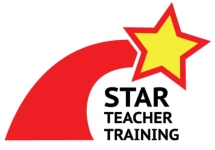I love using Total Physical Response (TPR) hand gestures to teach prepositions to young ESL learners. Years ago I hated teaching prepositions to ESL students. It was all gap-fill worksheets and no activity. So boring! Now I use preposition hand gestures to make make preposition lessons active and interesting for students of all ages.
Gestures for Prepositions
You can use your hands to demonstrate nearly every preposition of place in English that your children will need to learn. These are great for children to pick up as well because the physical actions help make meaning for young learners and many of them will remember the words better with the extra connection.









Preposition Gestures Activities
Song
My absolute favorite song about prepositions for young learners is “On, In, Under, By” by Maple Leaf Learning. It’s got a simple tune and is highly repetitive. It also works great with hand gestures. It can be a little tricky for students (and teachers) to get the hand motions down at first but they get great with practice. I play this short song as a quick primer whenever we’re going to do work with prepositions.

Drill Sergeant
I love playing this game with students to practice their listening skills. Early on we start simple and I just say the prepositions for the students to listen and make the gestures. Later on I’ll start using the prepositions in simple sentences such as “The cat is on the chair,” or “My pencil is the desk.” The students listen for the preposition and again show with their hands. It’s easy to watch them and see who can listen correctly. As the students get more advanced then the sentences can get longer and more complicated; “John is swimming with his friends in the pool.”
Speed Speak
Students can play Drill Sergeant with each as well. First, put the students in groups of three to five and then nominate one student to be the first speaker. They’ll tell their classmates a preposition and the fastest student to make the correct hand gesture gets to be the new speaker. Students practice their listening and speaking skills by playing for several minutes. More confident speakers can put sentences together, though it often helps to provide some support on the board such as nouns and sample sentences.
Error Correction
These gestures also work great when students make errors by using the wrong preposition. You can just signal the correct preposition with your hands and the student can self correct.
What techniques do you use for teaching prepositions? Share in the comments below.






